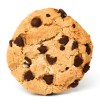Journal reference: Bruggink SC, Gussekloo J, Berger MY, et al. Cryotherapy with liquid nitrogen versus topical salicylic acid application for cutaneous warts in primary care: randomized controlled trial. CMAJ 2010; 182(15): 1624-30
Link: http://dx.doi.org/10.1503/cmaj.092194
Published: 13 September 2010
 Evidence cookie says… |
Liquid nitrogen cryotherapy is likely more effective than topical salicyclic acid for the treatment of common warts in primary care.
Note: the authors used a “high intensity” application of cryotherapy, which may be more intensive than typical in general practice. |
Clinical scenario
Liquid nitrogen (LN2) cryotherapy it is my treatment of choice for common warts. It wasn’t until John, a uni student, asked for my thoughts on wart creams that I realised I used cryotherapy out of habit. I reviewed the Therapeutic Guidelines; topical salicylic acid is first line therapy1. But I like freezing things!
Clinical question
How does LN2 cryotherapy compare to topical salicylic acid in the treatment of common warts?
What does the research evidence say?
Step 1: The Cochrane Library
There is one systematic review (2006): “The evidence … was generally weak due to poor methodology and reporting … The best available evidence was for simple topical treatments containing salicylic acid, which were clearly better than placebo … Evidence for the absolute efficacy of cryotherapy was surprisingly lacking.2”
Step 2: PubMed
Is there any new research? I used the search strategy:
warts AND cryotherapy; limited to randomised controlled trials, English, and published since 2006 only
Of the 11 results, I will look at Bruggink, et al. (2010)3 in detail.
Critical appraisal
We should focus firstly on the method before concerning ourselves with the results.
PICO
Participants: who was studied?
250 patients aged 4+ presenting to 30 family practices in the Netherlands with new cutaneous warts. About half were aged > 12 years. Exclusions: immunocompromise, genital warts, seborrhoeic warts, warts > 1 cm
Intervention: what was the exposure?
Cryotherapy group: “high-intensity” regimen, one session every 2 weeks (until cured), each session with 3 serial applications of LN2 with cotton wool, each application until 2 mm frozen halo
Salicylic acid group: 40% salicylic acid in petroleum jelly; participants to apply daily after paring (until cured)
Comparator: what was the control/alternative?
Wait-and-see group: advised on the benign nature of warts, no treatment for 13 weeks; OTC medications were allowed
Outcomes: what was measured?
Primary endpoint: wart cure (not visible or palpable be research nurses) at 13 weeks
Internal validity: are the trial results valid?
Randomised patient assignment?
Yes.
Groups similar at the start?
Yes. There were no substantial difference between the two groups (Table 1, p1627)3.
Groups treated equally apart from assigned treatment?
No. The cryotherapy group naturally saw the doctor more often.
All patients accounted for?
Yes. Dropout rates were small and similar; analyses were performed on intention to treat basis.
Measures objective? Or patients and clinicians kept blinded?
Yes. Assessment of wart “cure” is objective.
What were the results?
For common warts, the cure rates for cryotherapy, salicylic acid and wait-and-see were 49%, 15% and 8% respectively. Comparing cryotherapy to salicylic acid, the number needed to treat (NNT) was 3.
There were no statistically significant differences between any of the groups for plantar warts.
Conclusion
This wonderful example of primary care research demonstrates that LN2 cryotherapy may be more effective than topical salicylic acid for common warts. A few issues are noteworthy: (i) 40% salicylic acid is much stronger than OTC preparations, but (ii) patients in this group were probably less compliant (self-application vs doctor administered cryotherapy); (iii) the LN2 cryotherapy regimen is more “intensive” than usual, and there is evidence that more frequent4, and aggressive5, 6 cryotherapy is more effective.
I feel justified in holding onto my LN2 spray gun but should be more aggressive in my freezing! For plantar warts, no differences were detected between cryotherapy and salicylic acid; this was confirmed in a recent study comparing the two for plantar warts7.
Stat Facts
Number needed to treat (NNT)
NNT is a pragmatic statistic in evaluating the effectiveness of a treatment. It is the number of patients that will need to receive the intervention, for one additional patient to benefit compared to the alternative. A perfect treatment will have an NNT of 1, i.e., all patients benefit. The higher the NNT, the less effective the treatment. In this study, treating only 3 patients with cryotherapy rather than salicylic acid cured 1 additional patient.
References
- Human papillomavirus (warts) (revised February 2009) in eTG complete [Internet]. Therapeutic Guidelines Limited; July 2011. Accessed 14 September 2011.
- Gibbs S, Harvey I. Topical treatments for cutaneous warts. Cochrane Database of Systematic Reviews 2006, Issue 3. Art. No.: CD001781
- Bruggink SC, Gussekloo J, Berger MY, et al. Cryotherapy with liquid nitrogen versus topical salicylic acid application for cutaneous warts in primary care: randomized controlled trial. CMAJ 2010; 182(15): 1624-30
- Bourke JF, Berth-Jones J, Hutchinson PE. Cryotherapy of common viral warts at intervals of 1, 2 and 3 weeks. British Journal of Dermatology 1995; 132(3): 433-6
- Connolly M, Bazmi K, O’Connell MO, et al. Cryotherapy of viral warts: a sustained 10-s freeze is more effective than the traditional method. British Journal of Dermatology 2001; 145: 554-7
- Canpolat F, Çevіrgen Cemіl B, Eskіoğlu F. Liquid nitrogen cryotherapy of plantar verrucae: cryoblast is more effective than cryo-spray [Correspondence]. European Journal of Dermatology 2008; 18(3): 341-66
- Cockayne S, Hewitt C, Hicks K, et al. Cryotherapy versus salicylic acid for treatment of plantar warts (verrucae): a randomised controlled trial. BMJ 2011; 342: d3271

Recent Comments